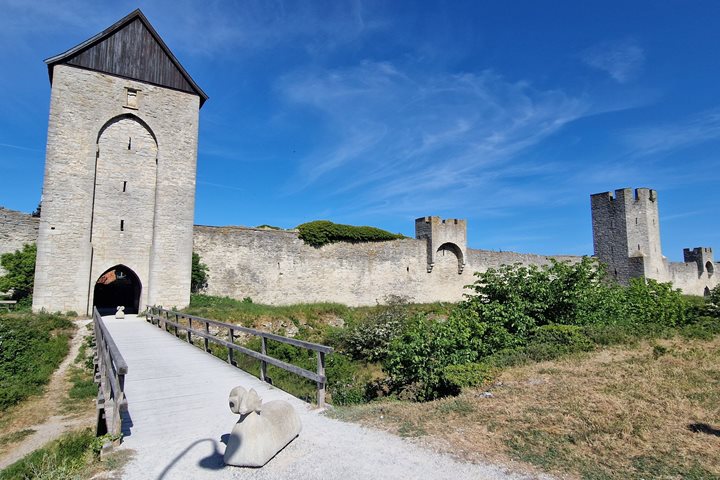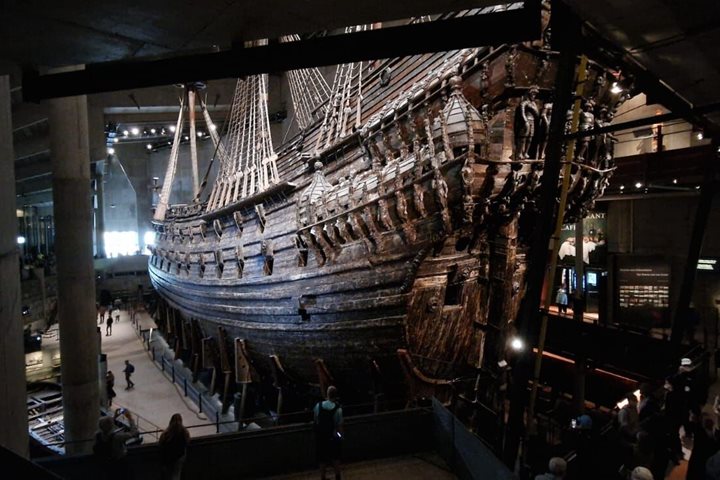National Geographic Explorer tied up at the Elevatorkajen in Kalmar, directly opposite the magnificent former grain mill of local entrepreneur Jensen, built in the early 20th century. Today was another spectacularly beautiful day with clear skies and hardly any wind. We set off in Zodiacs for a short drive around the modern harbour headland towards the grand old Kalmar Castle. It sits on its own little island, surrounded by beefcake bulwarks. Above the walls, elegant, copper-clad roofs and peculiar ‘Renaissance’ gables rise up. We had a dry landing on a jetty next to the park. Lovely rhododendrons were everywhere.
In 1397, Queen Margaret the First united the three countries – Norway, Sweden, and Denmark – into the Kalmar Union, under one king, mostly to be able to compete with the aggressive Hanse. The Union survived until 1523 when Gustavus Adolphus Wasa left the union and proclaimed Sweden’s independence on June 6th – exactly 500 years ago. Today’s holiday was clearly very special to the Swedes, although they are not known for their extravagant parties.
Kalmar Castle served as the union’s political centre until it was captured by the Danes, and its military importance waned thereafter. King Gustav I and his sons completely rebuilt and refurnished it, turning the medieval fortress into a castle fit for a Renaissance king. In the grand reception rooms, not much remains, but our guide did an excellent job of recreating courtly life (including a series of poisonings) for us. We saw the king’s private bedchamber with elaborate marquetry, and a secret passage behind one of the carved panels was a colourful highlight.
Afterwards, we strolled over the green ramparts close to the Baltic Sea (and a host of screaming seagulls) to get back to our Zodiacs.
In the afternoon, a smaller contingent followed our guide Mia through the streets of Kalmar, or rather, ‘New Kalmar’: a fortified city laid out in mid-17th century with a classical, even martial grid. In the centre: the grand but solid Domkirk – the main church – built by Tessin Jr. in a baroque style – something not often seen in Sweden. Across the street: the old city hall, in ‘Dutch’ Renaissance style, with a peculiar emblem in its gable – a young tree held up by a golden support pole. The message: Obsequiam Iuvat – Obedience pays off. A stern message from the king to the townsfolk (he had the mayors and the judges beheaded, at one time).
Then: the Kalmar County Museum, which hosts a really good display on Kronan, the flagship of a Swedish fleet that exploded and sank during a battle with Danish and Dutch ships off Öland. As in the Vasa Museum, hundreds of objects were recovered from the wreck, and not just guns – a hoard of gold coins, clothes belonging to the unfortunate admiral Creutz (we met his great-great-great grandson two weeks ago, in Malmgård, Finland), and so on.
Then: a last juddgrubb ice cream, and all aboard for the last stretch of our voyage.






